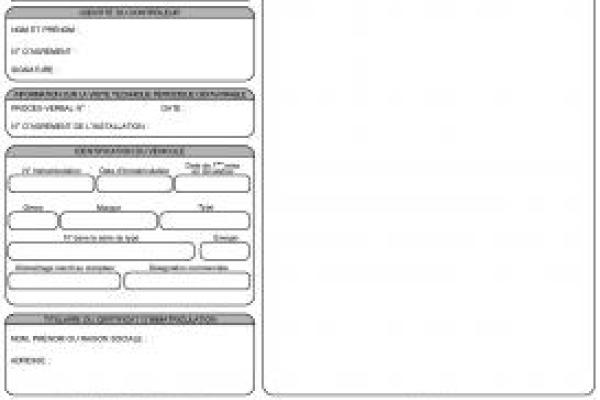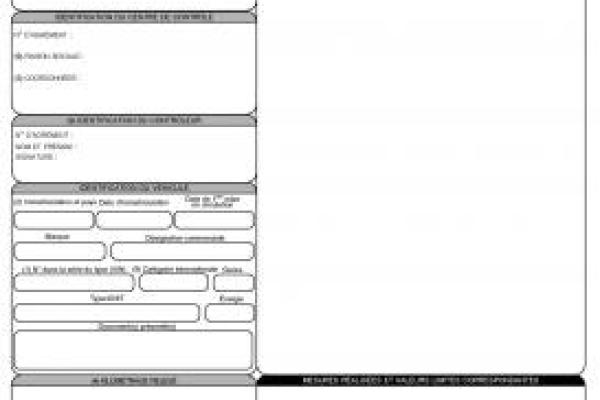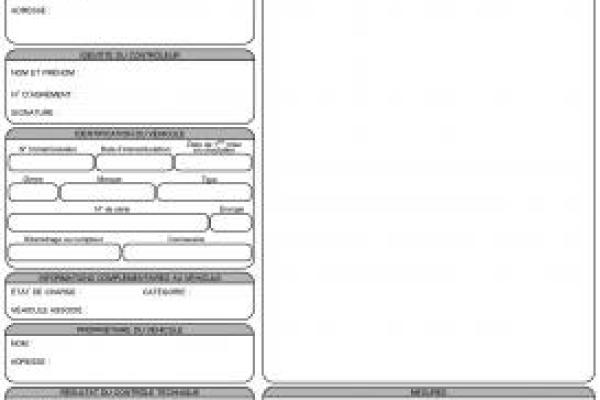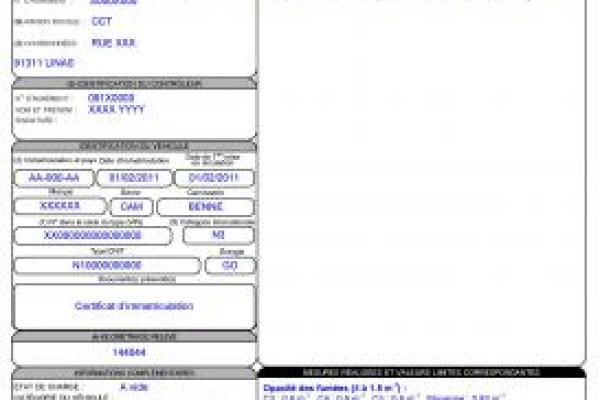General information
General overview
Roadworthiness of a vehicle in categories M1, N1, M2, M3, N2, N3, O3 and O4 is attested by a single document. This document consists of a printed certificate of the roadworthiness test results (procès-verbal de contrôle technique, CCT) a proof-of-test stamp (preuve de réussite du contrôle, PRC) to be stuck to the registration certificate and a second sticker summarising key information about the test. This second sticker is stuck to the vehicle windscreen by the tester and is not a proof of test. Results of the roadworthiness test appear in Section 7 of the roadworthiness certificate and as a letter on the proof-of-test stamp . If a vehicle has passed the roadworthiness test, Section 7 of the certificate contains the text “Favorable”. On the proof-of-test stamp , the following letters can appear: • A – the vehicle has passed the roadworthiness test • S – test failed due to major defects • R – test failed due to dangerous defects. The stamp also indicates the expiry date of the roadworthiness certificate. In addition to the periodic roadworthiness test, N1 vehicles are subject to an emissions test known as the complementary technical control (contrôle technique complémentaire). If the next due test is a complementary technical control, this and its due date are mentioned in the section “Nature of the next control” (Nature du prochain contrôle) while the text “POLLU” and due date appear on the proof-of-test stamp under the roadworthiness expiry date. If either of these dates have passed, the vehicle no longer complies with its legal requirements for technical testing. For all categories of vehicle, the proof-of-test stamp and windscreen sticker must either be detached from the certificate or have been made unusable, including if the proof-of-test stamp could not be stuck to the registration certificate after a roadworthiness or emissions test.
Test frequency
|
Categories or types of vehicles |
First mandatory test |
Subsequent tests |
|
M1 |
Within four years after the date of entry into service |
Every two years |
|
N1 |
Within four years after the date of entry into service |
Every two years From the fifth year, a complementary technical control of emissions is performed every two years, between each periodical roadworthiness test. |
|
N2, N3, O3 and O4 |
Not provided |
Every year |
|
M2 and M3 |
Not provided |
Every six months |
Exemptions: M2, M3, N2, N3 and O3 vehicles of historical interest, O4, M1 and N vehicles of historical interest registered before 1960, military vehicles and diplomatic vehicles do not need to be inspected periodically.
Responsible authorities
Roadworthiness tests are performed by private testers working in private test centres approved by the prefects for their administrative region, known as a department. The roadworthiness test certificate, proof-of-test stamp and windscreen sticker are issued by the tester who carried out the roadworthiness test of the vehicle.
Websites
www.legifrance.gouv.fr (French)
Regulations for M1 and N1 vehicles: https://www.legifrance.gouv.fr/affichTexte.do?cidTexte=JORFTEXT000000171443&fastPos=1&fastReqId=502636714&categorieLien=cid&oldAction=rechTexte.
Regulations for M2, M3, N2, N3, O3 and O4:
http://www.utac-otc.com (French)




